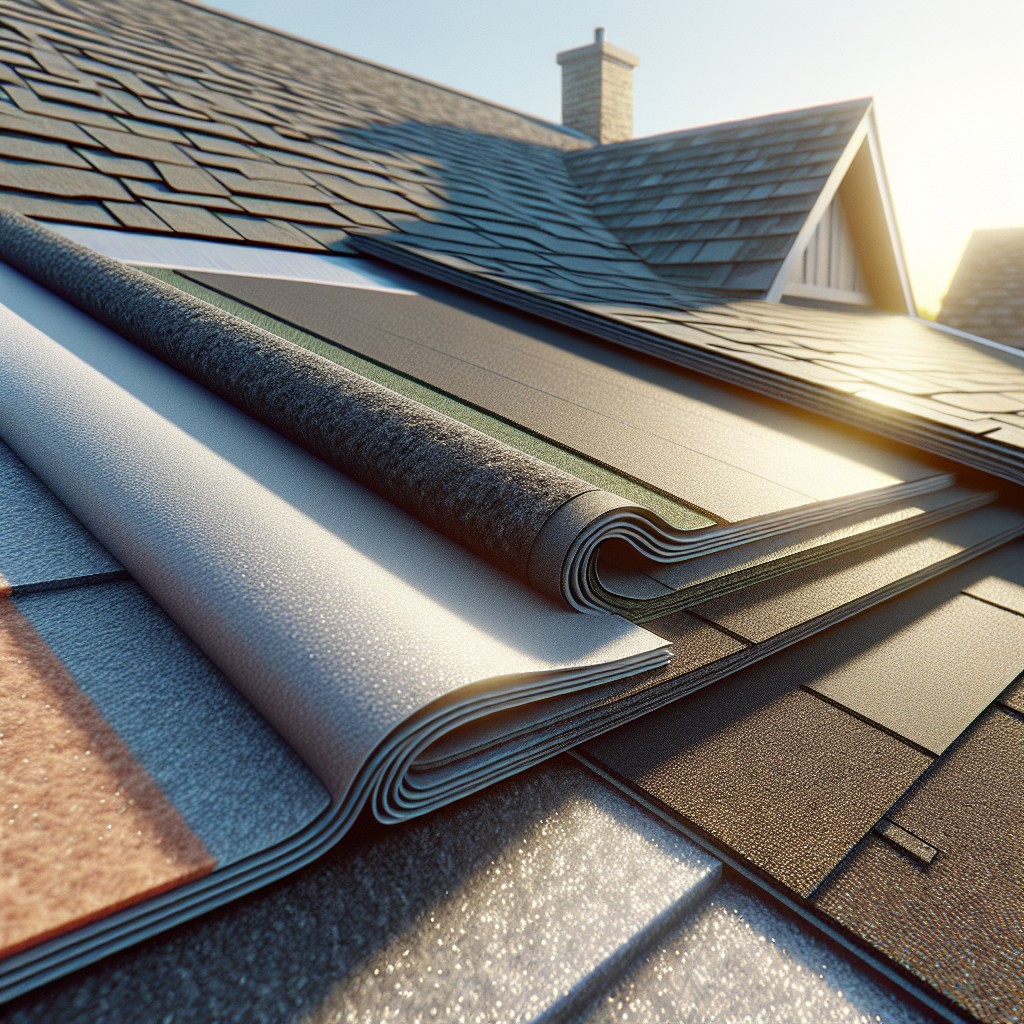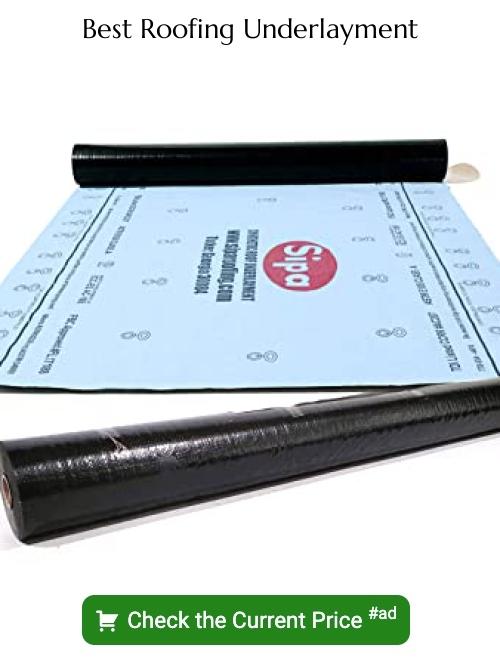Last updated on
When choosing between synthetic underlayment and felt for your roofing project, understanding the differences in durability, weather resistance, and cost is essential.
Key takeaways:
- Synthetic underlayment offers enhanced durability and moisture resistance.
- Synthetic underlayment is lighter and easier to handle and install.
- Synthetic underlayment is more resistant to tearing, water, and UV exposure.
- Synthetic underlayment is suitable for a variety of roofing materials and climates.
- Synthetic underlayment may provide better long-term value despite higher upfront cost.
Significance of Roof Underlayment

Roof underlayment provides a crucial layer of protection, acting as a secondary defense against the elements beneath your shingles. It is essential in guarding against water penetration that can otherwise lead to costly damage in your home.
Durability also plays a key role; this hidden layer supports the longevity of the roof as a whole by safeguarding the deck from moisture and mitigating the risk of leaks. Additionally, underlayment contributes to overall energy efficiency by improving the roof’s ability to handle temperature changes, subsequently impacting the comfort and heating costs of your home.
Finally, this barrier may be requisite for meeting building codes and can be critical for maintaining the validity of roofing material warranties.
Comparing Felt and Synthetic Underlayment
Felt underlayment, traditionally made from either natural wood fiber (organic felt) or fiberglass infused with asphalt, has been a time-tested staple in roofing for decades. It’s known for its low cost and ease of installation. Organic felt, specifically, is heavier and considered more robust, but it can absorb moisture and is less durable than fiberglass options.
Synthetic underlayment, on the other hand, consists of polymers and polypropylene, which imbue it with superior strength, moisture resistance, and longevity. It’s typically lighter and covers more area with less material, making it easier to handle and install. Synthetics do not degrade as easily as felt and often come with longer warranties.
Durability is a notable difference. Synthetics resist tearing, which can be crucial during heavy winds or when walked on during installation. They also lay flatter than felt, reducing the likelihood of wrinkles that could affect shingle installation.
Another consideration is weight. Synthetic materials are significantly lighter than felt, which can make a difference in both labor cost and structural stress.
Water resistance is a key component of underlayment function. Synthetic underlayments are generally more resistant to water and vapors, effectively acting as a secondary barrier to moisture, a property where traditional felt can fall short, especially if left exposed to the elements for extended periods.
In terms of installation, synthetic underlayment often comes with pre-printed guidelines, which facilitate quicker and more accurate shingle placement. Additionally, many synthetic products are suitable for use under a variety of roofing materials, including metal, where traditional felt may not always be advisable.
Ultraviolet (UV) exposure tolerance is another area where synthetic materials excel. If a project encounters delays causing the underlayment to be exposed for days or weeks, synthetics can handle the exposure without degrading, unlike felt, which can deteriorate and become brittle.
In summary, while felt underlayment has its advantages in cost and traditional application, synthetic underlayment tends to offer enhanced durability, lightness, moisture resistance, installation ease, and adaptability under various roofing materials and environmental conditions.
Cost Comparison: Felt Vs. Synthetic Underlayment
When evaluating the cost of felt and synthetic underlayment, initial outlay and long-term value must be considered. Traditionally, felt underlayment, also known as tar paper, is less expensive upfront. Its affordability makes it a go-to option for many budget-conscious builders and homeowners. However, felt’s lifespan is shorter, and its performance can degrade more quickly over time, especially in harsh weather conditions.
On the other hand, synthetic underlayment is generally more costly to purchase initially. Yet, this greater expense is offset by its durability, as synthetic materials often last longer and provide better protection against moisture and UV radiation. In addition, synthetic underlayment is lighter and comes in larger rolls, which can translate to lower labor costs due to easier and faster installation.
In sum, while felt underlayment may have a lower initial cost, synthetic underlayment could provide better value over time, factoring in potential savings from reduced maintenance, longer lifespan, and installation efficiencies. It’s essential to weigh these factors against the specific needs of the roofing project to make an informed decision.
Suitability for Different Climatic Conditions
Synthetic underlayment offers superior performance in diverse weather conditions. Engineered to be water-resistant and less likely to absorb moisture, it provides robust protection against rain, snow, and ice damming. Its design helps prevent mold growth and stands up well under UV exposure, making it ideal for areas with long periods of sunshine or waiting times before installing the final roof covering.
Conversely, felt underlayment, while water-resistant, can be prone to wrinkling when exposed to high humidity or moisture, potentially affecting its efficacy as a barrier. Traditional felt can also tear more easily in high winds during installation, which may be a concern in storm-prone regions.
To summarize, synthetic materials are usually more suitable for extreme weather conditions, while felt may be adequate for milder, dry climates. When selecting an underlayment, consider local weather patterns and the likelihood of severe weather events to ensure the chosen material provides the necessary protection.
The Role of Roof Underlayment in Overall Roofing System
Roof underlayment serves as an additional barrier of protection between your home and the elements. It is laid directly on the roof deck, beneath the shingles or other roofing materials, to safeguard against leaks and moisture ingress caused by rain, snow, ice, and wind-driven water.
This layer helps maintain the integrity of the roof structure by preventing water damage to the roof deck, which can lead to rot, mold, and deterioration.
Furthermore, it supports the proper installation of the roof covering by providing a flat, uniform surface. Quality underlayment also optimizes the life expectancy of shingles, as it can prevent them from adhering directly to the roof deck, which can cause premature aging due to heat buildup.
Certain types of underlayment can offer additional benefits, such as enhanced walkability for installers, increased fire resistance, and sound insulation.
Lastly, in many regions, underlayment is a building code requirement, essential for passing inspections and maintaining warranty standards for roofing materials.





